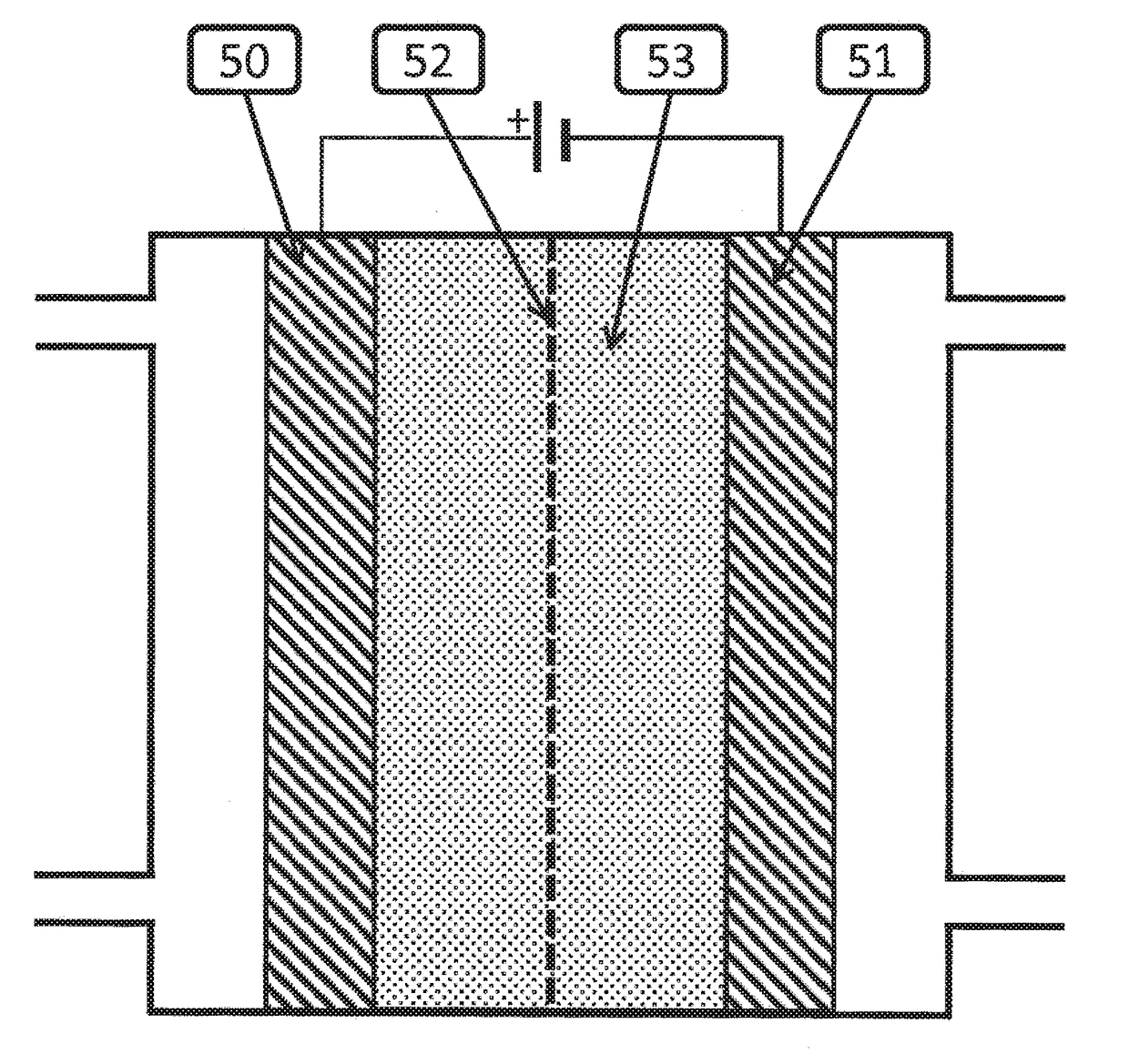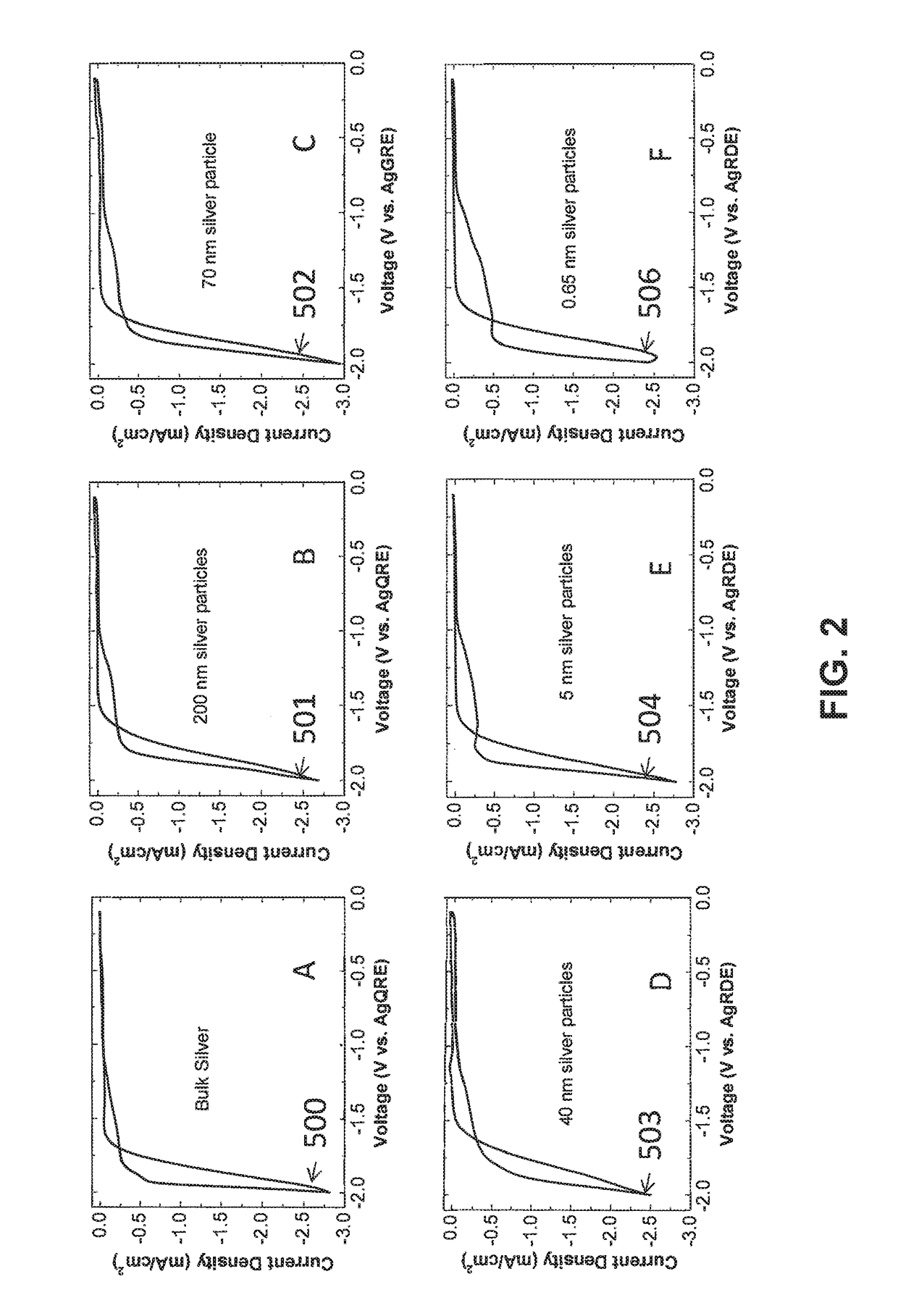Electrocatalytic Process For Carbon Dioxide Conversion
- Summary
- Abstract
- Description
- Claims
- Application Information
AI Technical Summary
Benefits of technology
Problems solved by technology
Method used
Image
Examples
example 1
lid Polymers as Helper Catalysts
[0092]The objective of this example is to show that polymers containing imidazoliums can be Helper Catalysts.
[0093]A copolymer, which is designated here as PSMIM (Cl), was prepared following the synthetic route in U.S. Pat. No. 9,370,773. “PSMIM” refers to a co-polymer of polystyrene and poly 1-(p-vinylbenzyl)-3-methyl-imidazolium:
where X− is an anion, m>0 and n>0.
[0094]The inhibitor-free styrene was prepared by passing styrene (Sigma-Aldrich) through the tert-butylcatechol (TBC) inhibitor remover (Sigma-Aldrich 311340). In general, 40 ml of remover is sufficient to yield 50 ml of clear, inhibitor free styrene. Inhibitor TBC in 4-vinylbenzyl chloride (4-VBC) was removed by the same inhibitor remover in a similar fashion.
[0095]Poly(4-vinylbenzyl chloride-co-styrene) was then synthesized by heating a solution of inhibitor-free styrene (Sigma-Aldrich) (36.139 g, 350 mmol) and 4-vinylbenzyl chloride (Sigma-Aldrich) (29.7272 g, 190 mmol) in chlorobenzene (...
PUM
| Property | Measurement | Unit |
|---|---|---|
| Fraction | aaaaa | aaaaa |
| Fraction | aaaaa | aaaaa |
| Size | aaaaa | aaaaa |
Abstract
Description
Claims
Application Information
 Login to View More
Login to View More - R&D
- Intellectual Property
- Life Sciences
- Materials
- Tech Scout
- Unparalleled Data Quality
- Higher Quality Content
- 60% Fewer Hallucinations
Browse by: Latest US Patents, China's latest patents, Technical Efficacy Thesaurus, Application Domain, Technology Topic, Popular Technical Reports.
© 2025 PatSnap. All rights reserved.Legal|Privacy policy|Modern Slavery Act Transparency Statement|Sitemap|About US| Contact US: help@patsnap.com



